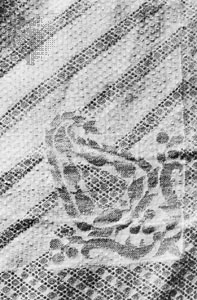jāmdānī
Indian textile art
 type of figured muslin that is one of the greatest accomplishments of the Indian weaver. The origins of figured muslin are not clear; it is mentioned in Sanskrit literature of the Gupta period (4th–6th century AD). It is known, however, that in the Mughal period (1556–1707) the finest jāmdānīs were produced at Dacca (Dhākā), in the state of Bengal (now Bangladesh), the work being characterized by extremely elaborate designs. The weaving of jāmdānīs was introduced in Lucknow, Uttar Pradesh, under the nawabs of Oudh in the late 18th century and attained great excellence. Because these textiles required great skill in their manufacture, they were very costly and could be afforded only by the very rich.
type of figured muslin that is one of the greatest accomplishments of the Indian weaver. The origins of figured muslin are not clear; it is mentioned in Sanskrit literature of the Gupta period (4th–6th century AD). It is known, however, that in the Mughal period (1556–1707) the finest jāmdānīs were produced at Dacca (Dhākā), in the state of Bengal (now Bangladesh), the work being characterized by extremely elaborate designs. The weaving of jāmdānīs was introduced in Lucknow, Uttar Pradesh, under the nawabs of Oudh in the late 18th century and attained great excellence. Because these textiles required great skill in their manufacture, they were very costly and could be afforded only by the very rich.A striking feature of jāmdānī muslins are the patterns of Persian derivation. The fabric is usually a gray cotton ornamented with brightly coloured cotton and gold and silver wire. In saris (sari), the characteristic garment worn by Indian women, the corners are woven in patterns derived from shawls. The field is decorated with bunches of flowers suggestive of the jasmine or with diagonally arranged circles.
- English language
- English literature
- English National Ballet
- English oak
- English school
- English setter
- English toy spaniel
- English yew
- englyn
- engraved glass
- engraving
- Enguerrand Charonton
- Enguerrand de Marigny
- Enguerrand de Monstrelet
- enharmonic
- Eni
- ENIAC
- Enid
- Enid Bagnold
- Enid Blyton
- Enigma
- enjambment
- Enke, Karin
- Enkhuizen
- enlarger